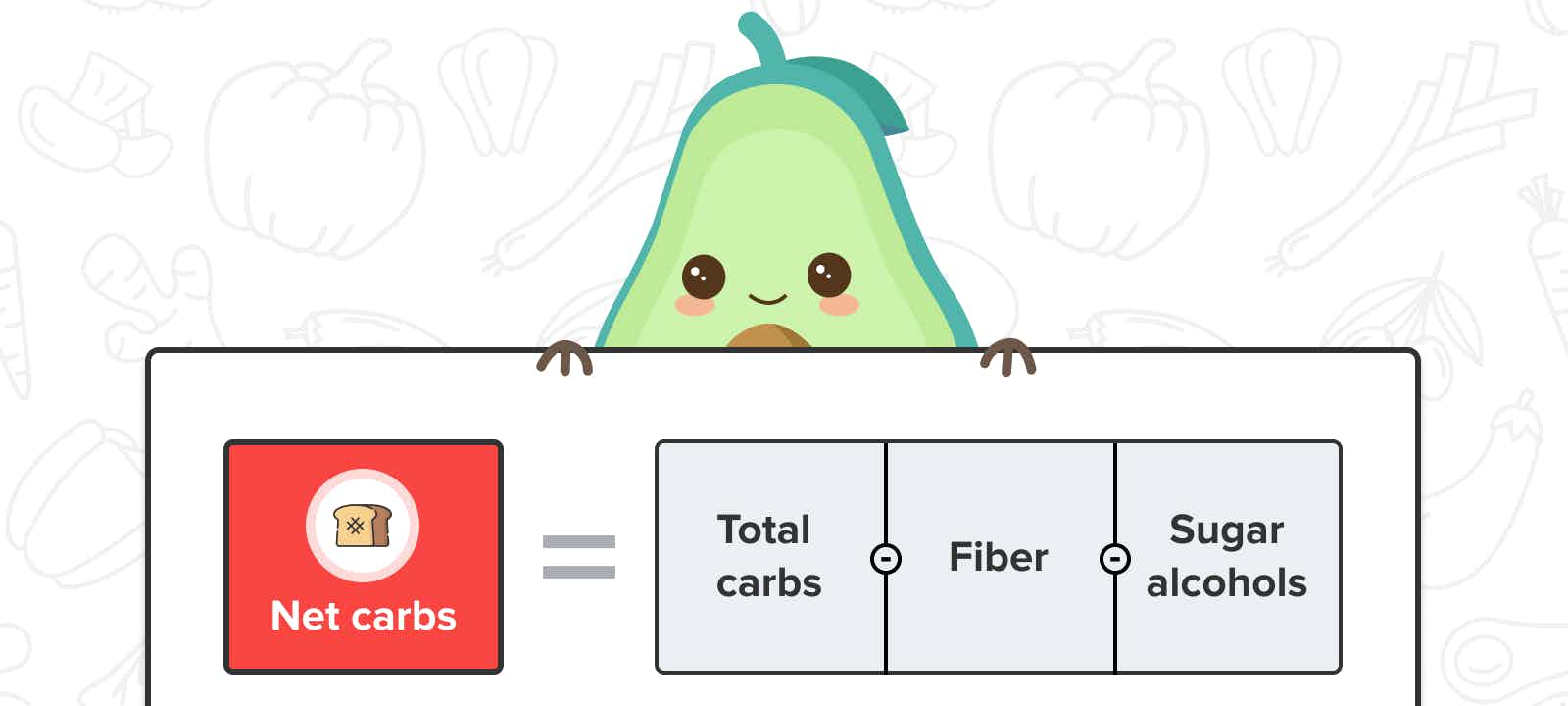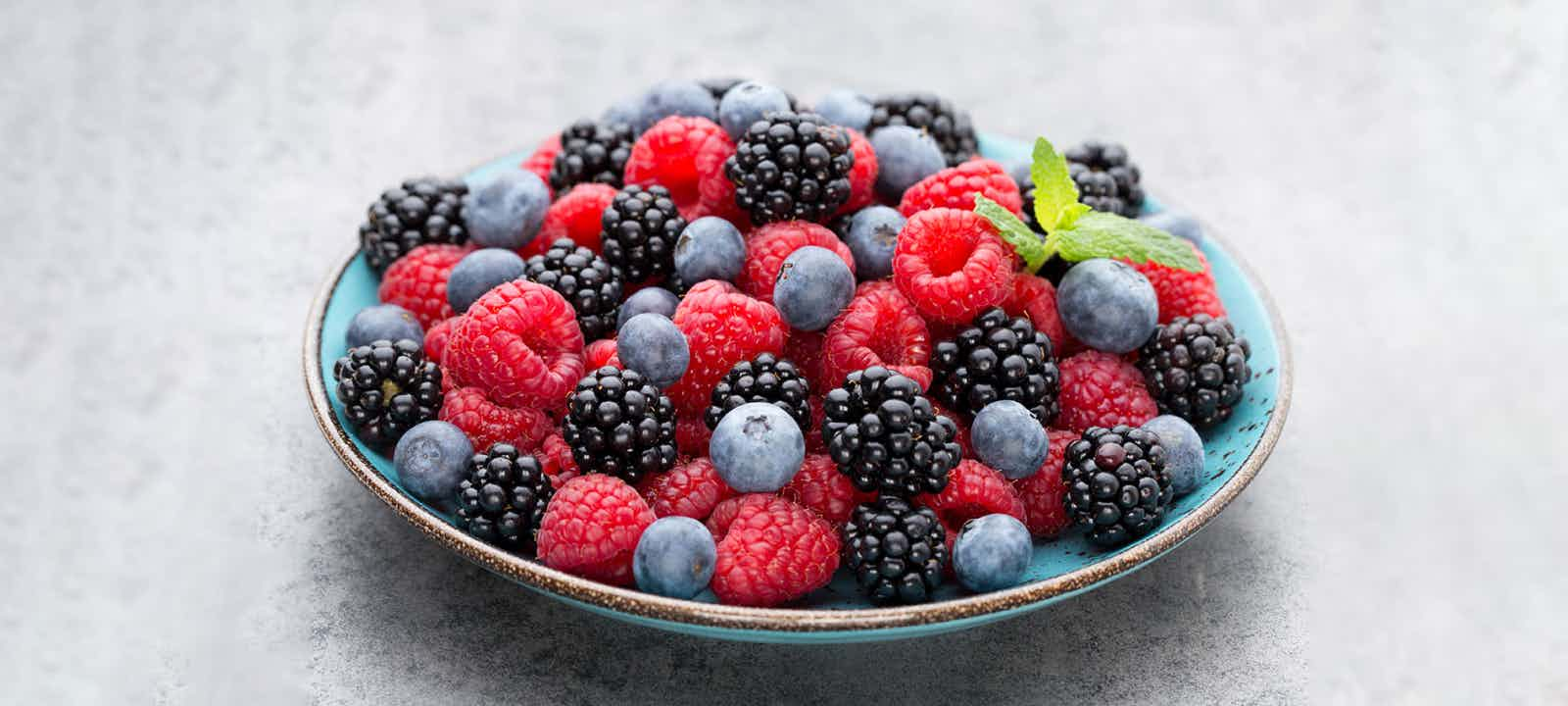How Many Carbs To Eat On A Low Carb Diet
One of the core principles of the Ketogenic diet is keeping carbohydrate intake extremely low – less than 50 grams per day.
The purpose of keeping carbs low is so that your body has to switch to using fat as the primary energy source instead of glucose from carbohydrates. Fat is a very energy-dense molecule, and some of that energy is converted into ketones. Ketones can be used by most of the cells in your body for energy instead of glucose. When your body switches to using fat and ketones as the primary energy source, you're in a state of nutritional ketosis.
But that doesn't mean you have to (or would even want to) completely remove all carbs from your diet. After all, Keto isn't meant to be a zero carb diet.
In this Keto Beginners Series, we're going to talk about the types of carbohydrate foods that fit best into the low carb, high fat Ketogenic diet.
Everyone has slightly different levels of carbohydrate restriction on the Ketogenic diet. Some people can get away with eating more and stay in ketosis, while others may need to be more restrictive.
Most Ketogenic diet guidelines recommend you stay between 15 - 30g of net carbohydrates per day, or 5-10% of total calories.
Net carbohydrates = Total Carbohydrates - fiber - sugar alcohols
In general, if you're a very active person who exercises 4 to 5 times a week, you're more likely to be able to consume more carbohydrates and stay in ketosis.
But if you live a sedentary lifestyle and are overweight, we encourage you to keep carb intake on the lower end to ensure you achieve a state of ketosis.

There are certain foods that contain extremely high amounts of carbohydrates and will need to be avoided in order to achieve and maintain ketosis.
During your Ketogenic journey, avoid high-carbohydrate foods including: Most fruits, pasta, potatoes, candy bars, pastries, donuts, candy, soda, juice, rice, and bread.
Now that you understand which foods should be avoided entirely, let's talk about the best Ketogenic-friendly carb sources you can still incorporate into your diet plan.
Some of the foods listed below still contain some carbohydrates, so it's best to be sure to read labels and carefully track your intake so you don't overdo it, especially if you're a beginner.
#1. Cocoa Powder and Dark Chocolate
Cocoa powder and dark chocolate are great alternatives to eating sugary chocolate bars. They're a great source of antioxidants. Chocolate is even considered a "superfood," because it contains essential nutrients to help you stay healthy.
Dark chocolate also has flavanols, which have been linked to reducing the risk of heart disease by lowering your blood pressure.
It's important to only consume dark chocolate that contains 85% cocoa or more.Anything less usually contains other higher carbohydrate ingredients that could potentially interrupt ketosis.[*]
Tip: A great low-carb snack you can make with cocoa powder or dark chocolate is a Keto Coconut-choc Fat Bombs. Simply add cocoa powder into a bowl with almond butter and coconut oil and put it in the microwave or heat on a stovetop and stir until it becomes a consistent liquid. Then place it in the freezer for half an hour and you'll have a tasty, sweet low-carb snack! Add a little stevia if you need a little more sweetness. Read about more Keto snack ideas here.
Vegetables store sugar in the form of starch. Non-starchy vegetables store less sugar, so they are low in starch and carbohydrates. They are also low in calories, high in fiber, and nutrient-dense, making them the perfect Keto-friendly carb source.
Many non-starchy veggies contain high amounts of fiber, which is a carbohydrate itself. However, fiber doesn't break down into glucose, or sugar, in your digestive system like other carbohydrates do, so the fiber doesn't count toward your carbohydrate limits! This fact about fiber becomes important when reading labels because fiber is included in the grams of total carbs. Remember, take total carbs – fiber to determine how many carbs in the food count towards your carbohydrate goal.
You can consume large amounts of the following low-carb veggies on Keto:
- Kale
- Spinach
- Broccoli
- Cauliflower
- Zucchini
- Brussel's sprouts
Veggies that grow above ground tend to be non-starchy and low in carbs (there are some exceptions - always check nutritional information in the Carb Manager app).
Avocados should be a staple in everyone's Ketogenic diet. They are high in essential vitamins and minerals including potassium and magnesium, and are a great source of monounsaturated fat.
Avocados make the Keto-adaptation phase much easier, because you replenish your body with the essential minerals it excretes during the initial fat-adaptation stage.
One avocado only contains about 2-3g of net carbs per serving, making it the perfect Ketogenic-approved fruit!
Most other fruits are too high in carbohydrates, so they'll mostly need to be avoided. Berries are the one exception.
Berries are both low in carbs and high in fiber.
These fruits are packed with antioxidants that have been shown to provide anti-inflammatory effects and protect against disease.[*]
Remember, they still have some carbs, so try to keep your berry consumption in moderation.

Shirataki noodles are great for Keto-ers who miss eating pasta. These noodles contain less than 1g of carbs because they're mostly water and fiber.
You can get them at your local health food store, often in a fettuccine, linguine, or rice shape.
If you want to make a pasta dish, substitute normal pasta for shirataki noodles for a delicious low-carb meal!
Research has found that polyphenols from olives can help reduce inflammation, protect cells from damage, decrease blood pressure, and have anticancer potential.[*]
Half of the carbs from olives are fiber, so they make for a great carb source on Keto.
A 14g serving of olives only contains 1g of total carbohydrates. This means around seven olives come out to 1g of carbs!
If you're looking for a Keto-friendly food to take the place of starches like rice and potatoes in your diet, look no further than the friendly cauliflower.
Cauliflower contains only 2g of net carbs per cup, so you can fill up on it and hardly move the carb needle.
Run some raw cauliflower through your food processor until it's a rice-y consistency, then microwave or pan fry the bits in coconut oil, and you'll have delicious cauliflower rice to accompany your main course. Or boil and mash cauliflower with cream and butter, and you'll have a tasty substitute for mashed potatoes.
While your carb cravings may feel very intense as a beginner on Keto, keep in mind that this is only temporary while your body gets used to becoming an efficient fat-burner.
By replacing high-carb sources with the low-carb foods listed above, you'll provide your body with the fuel and essential nutrients it needs to thrive.
If you're smart about it, consuming these low-carb foods will also help you stay full so your cravings are greatly reduced!
Note: The content in this article is not medical advice and is intended for informational and educational purposes only. Always talk to your doctor before changing your diet.
How Many Carbs To Eat On A Low Carb Diet
Source: https://www.carbmanager.com/article/xtqiqheaacaacj45/how-many-carbs-can-you-have-on-keto/

thanks for sharing such informative guide to start a healthy eating best Vitamin C Powder price in Pakistan
BalasHapusl glutathione tablets online in pakistan